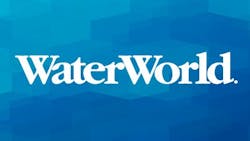World of water 2024
This year marks the first State of the Industry report for WaterWorld, following our counterparts Wastewater Digest and Stormwater Solutions in this exercise. The overall tone of the results indicate that utilities look forward to 2024 with optimism. Subjects represent water professionals from 42 of the 50 U.S. states and, to situate the data within a global context, we’ve included pieces showcasing water around the world.
First up, Bruce Bharat of Kamstrup tells the story of non-revenue water (NRW), although leak detection was the survey category respondents said they were least likely to invest in. Here we see a direct line from water treatment and NRW to another global crisis, aside from the seemingly million water-specific issues: greenhouse gas emissions.
To make more obvious global connections, Jacky Ben Yaish writes a piece on desalination plants in Israel that is dripping with passion for country and industry, giving specific examples of innovation in that region. To round it out, a new piece by Sandra DiMatteo brings us armchair travelers to India and the Philippines, and then lands us back home in the U.S. (California). Her topic? What to do when there is simply too much data to understand what it means, bringing us back to where we began: the urgent push for data-driven operations.
Change on the horizon
By Jeremy Wolfe
Looking ahead at 2024, we can see plenty of major disruptions for the water sector.
The proposed drinking water regulations for six per- and polyfluoroalkyl substances (PFAS) are likely to be finalized, requiring new advanced treatments to meet the Maximum Contaminant Levels. Proposed Lead and Copper Rule Improvements will introduce significant new requirements for the communication and management of lead in drinking water. The effects of these upcoming regulations will be huge — for both utilities and manufacturers.
These new changes are in addition to continuing challenges in the sector. The aging workforce requires a careful approach to managing personnel training and experience. A more-than-desirable inflation rate has dragged on for years now, requiring utilities to further optimize their expenses and raise customers’ rates. Ongoing digitalization of water management continues to increase the operations’ vulnerability to cyberattacks.
The disruptions of 2024 are not all challenges, however. The introduction of PFAS regulations and new LCR requirements will be a significant boon to the public’s trust in water. Colorado’s and California’s approval of direct potable reuse regulations, and the ongoing conservation agreements for the Colorado River System, represent a trend of growing resiliency for water supplies in the West.
There is a lot to look forward to in this next year, and a lot to brace ourselves against. As always, however, water utilities will endure and will continue to provide the necessary component for life.




